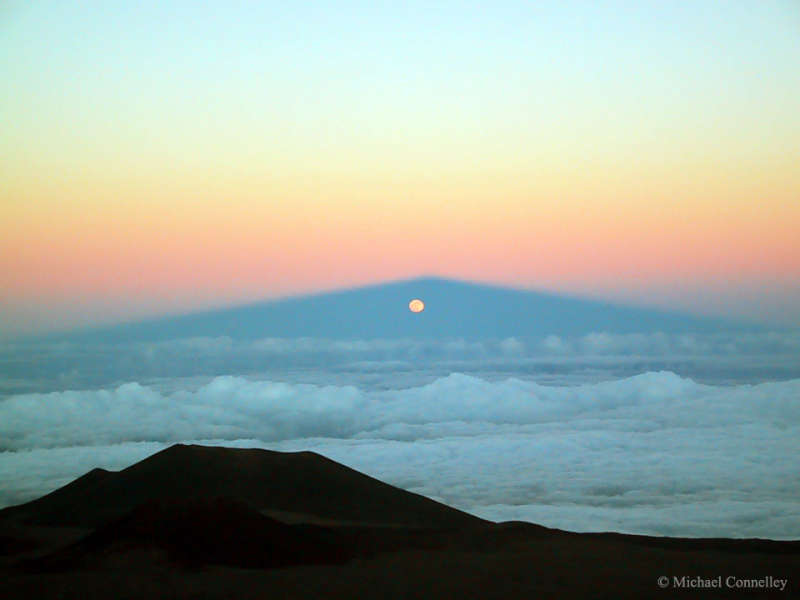
|
Credit & Copyright: Michael Connelley
(U. Hawaii)
Explanation:
How can the Moon rise through a mountain?
It cannot -- what was
photographed here is a
moonrise through the
shadow of a large
volcano.
The volcano is Mauna Kea,
Hawai'i,
USA,
a frequent spot for
spectacular
photographs
since
it
is
arguably
the
premier
observing
location
on
planet
Earth.
The Sun has just set in the
opposite direction,
behind the camera.
Additionally, the
Moon has just passed full
phase -- were it precisely at
full phase it would rise, possibly
eclipsed, at the very peak of the shadow.
The Moon is actually rising in the
triangular
shadow cone of the volcano,
a corridor of darkness
that tapers off in the distance like
converging train tracks.
The Moon is too large and too far away to be affected
by the shadow of the volcano.
Refraction of moonlight through the
Earth's atmosphere makes the
Moon appear slightly oval.
Cinder cones from old volcanic eruptions are visible
in the foreground.
|
January February March April May June July August September October November December |
| ||||||||||||||||||||||||||||||||||||||||||||||||
NASA Web Site Statements, Warnings, and Disclaimers
NASA Official: Jay Norris. Specific rights apply.
A service of: LHEA at NASA / GSFC
& Michigan Tech. U.
Based on Astronomy Picture
Of the Day
Publications with keywords: Moon - moonrise - Mauna Kea
Publications with words: Moon - moonrise - Mauna Kea
See also:
